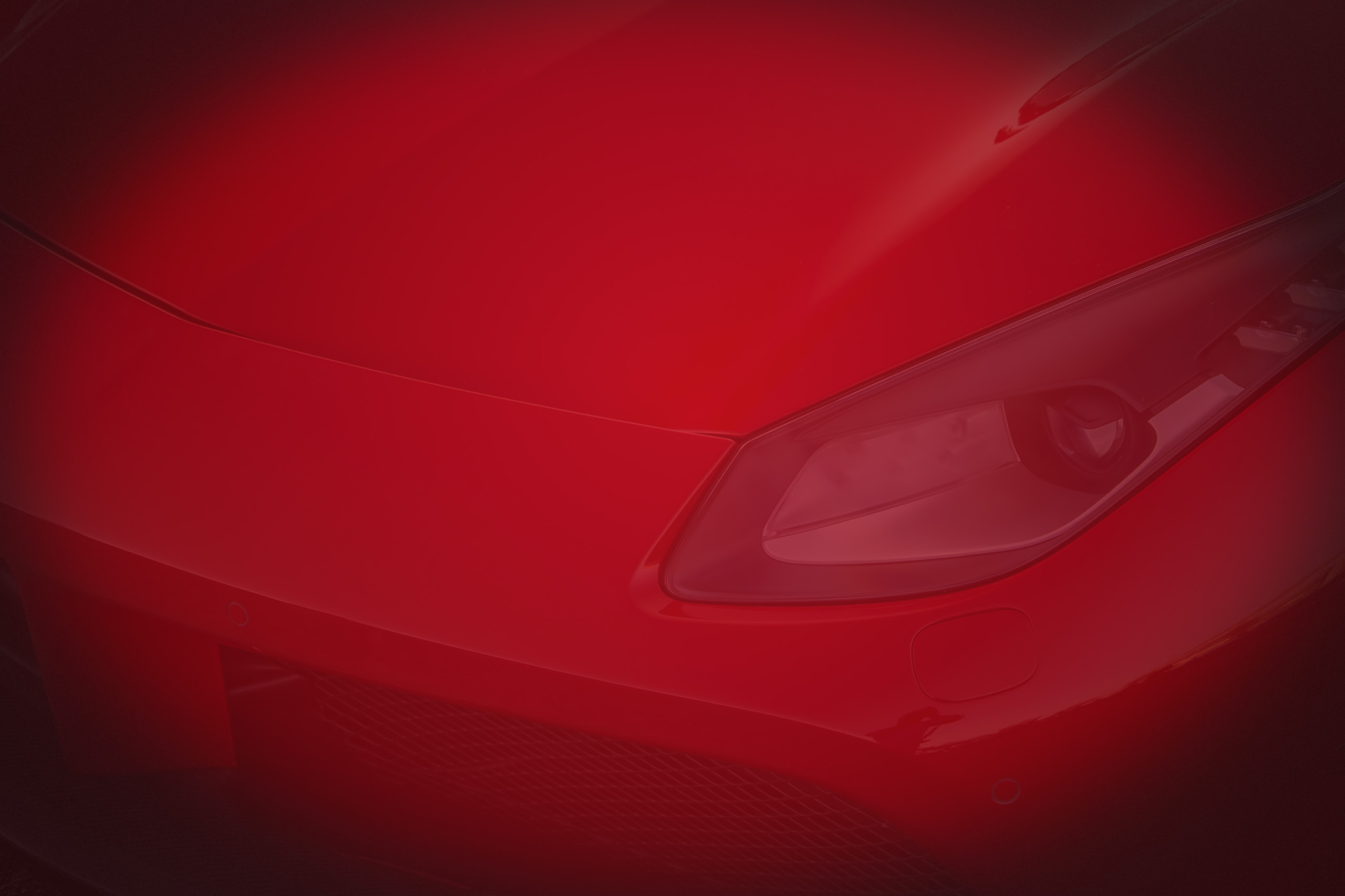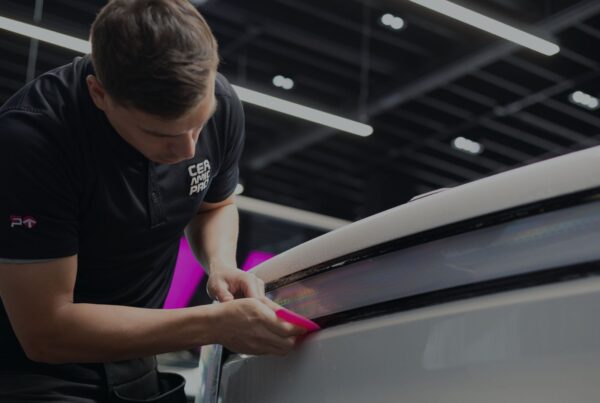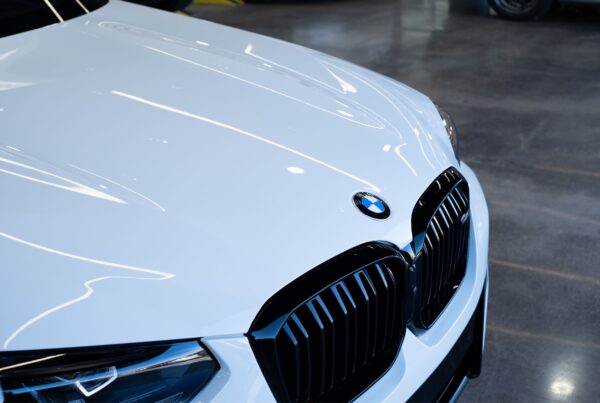Identifying the Protective Benefits of PPF
The modern paint protection industry is filled with many contenders and pretenders for your hard-earned money. It seems every time you turn your head the latest and greatest product is introduced that claims to keep your factory paint job looking brand new and free of damage. One of the most popular and proven solutions is PPF or a protective film. But does paint protection film work?
Honestly, among the slew of competitors for paint protection dollars, PPF is the clear-cut favorite, and the only one that truly protects the vehicles paint surface, hood, headlights, rocker panel, or the entire vehicle from road debris, rock chips, and scratches. It can block minor scratches on the original paint, reduce paint chips, and protect the car’s paint job for multiple years. This is not only a positive to the current car owner, but also future owners – which can increase your resale value.
Here there are several paint protection film products on the market for do-it-yourself car enthusiasts, or those applied by professional auto salons. The key to determining whether they work, is to outline what is important for you in a clear bra paint protection product. So, this is what we will endeavor to explore today.
How Does PPF Work?
In case you’re not aware, the automotive paint protection film has been around for about a decade. The first versions of this super strong polymer served to protect helicopter blades during the Vietnam War. As technology improved, and the need for this product in the automotive industry became more important, companies like 3M created PPF that would bond to the clear coat of paints easily.
Modern clear paint protection film is a thermoplastic urethane substance, comprised of multiple layers that makes the material stretchy, incredibly durable, and resistant to penetration of flying debris as it strikes the vehicle in motion.
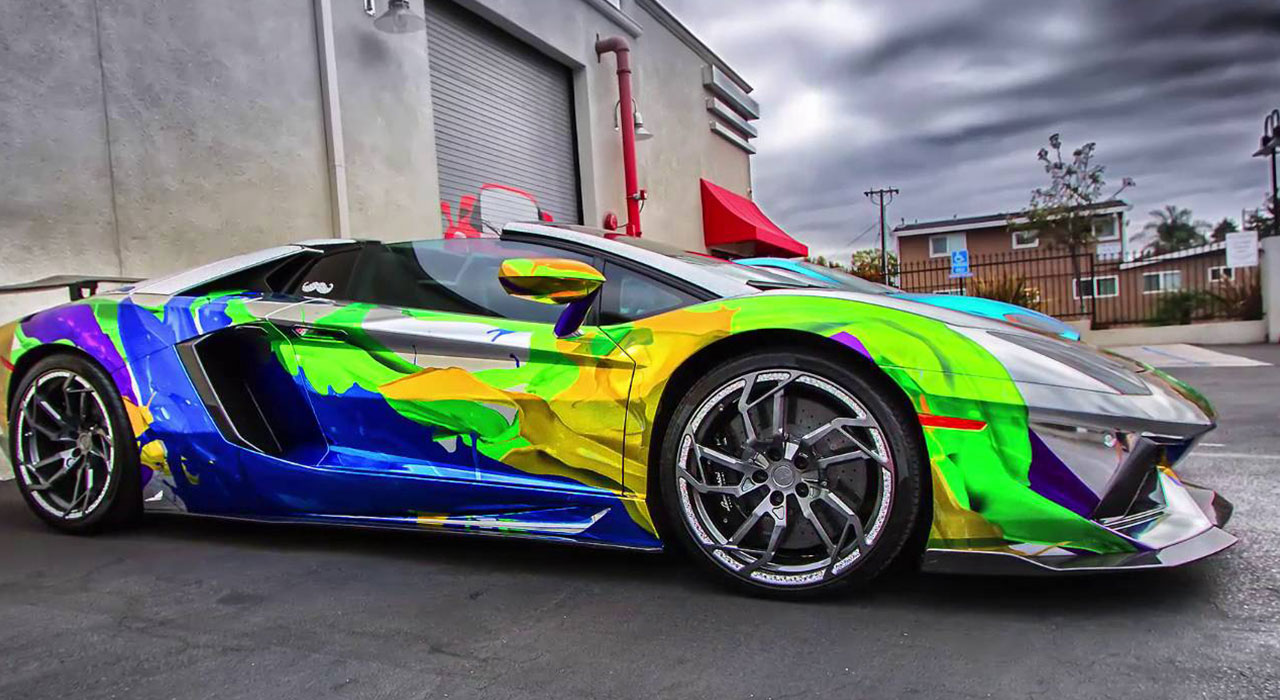
One of the coolest trends in exterior enhancement is installing a custom vinyl wrap – and protecting that wrap with a clear paint protection film. It gives you the best of both worlds.
The main difference between PPF and window tint is that PPF is much thicker, so it provides better protection on a painted surface. It’s different than a vinyl wrap as it’s more durable and able to resist punctures easier. Also, water doesn’t penetrate a PPF as easy as vinyl. This makes PPF installation and removal easier – which can save you money down the line.
When PPF is professionally applied to a debris-free surface on the entire vehicle, it provides a flexible layer of protection that offers a slew of benefits including:
- Protection against mineral deposits, acid corrosion and natural animal byproducts (like bird droppings, pollen, tree sap, and bug splatter). This is what hits your front bumper often, and why protective paint film is great as a clear bra installation.
- Blocking harmful UV rays which can lead to oxidation, corrosion, and the formation of rust.
- Deflects small gravel, road debris, tree branches and other hard items from penetrating to the clear coat, leading to damage.
- Keeps expensive custom paint jobs like matte finish protected from light scratches, which can cost a lot of money to repair.
PPF is essentially an invisible, thin, and stretchy shield of protection. It works by taking the impact of those small pieces of gravel, rocks, hard dirt, and even tiny screws and bolts that find a way to hit your car while driving down the road. If the film is damaged or scratched, it has the technology to heal itself – either with direct heat (like a hot air gun).
So – if you’re number one concern is protecting the paint job of your car from debris strikes, PPF is the clear choice and will work for most car owners.
Are All PPF Products Identical?
Absolutely NOT. In fact, the modern crop of car paint protection film is separated into three categories.
Entry Level PPF
The generic clear bra is the entry-level solution to produce invisible protection. These urethane films are usually made overseas and are marketed under several different brand names. It’s an older formulation that does a fine job of protecting your vehicle from rock chips and other small debris strikes, but tends to yellow, discolor, and age quickly due to excessive exposure to outdoor elements – especially UV exposure.
Self-Healing PPF
The most popular type of automotive paint protection film are the self-healing variants. They are made by several popular companies like 3M, Suntek, Xpel paint protection film, and others. These blends solved the yellowing issues by infusing them with better formulated top coatings, which helps to block UV rays instead of absorbing them into the material.
If they are scratched or pitted due to small debris strikes to prone areas (like the front end, side mirrors, and fenders) – a professional auto salon can easily repair them by using a heat gun and trained techniques.
Instant Healing PPF
The top shelf paint protection films are those infused with nanotechnology that allows them to fill small imperfections on the car’s paint surface – and instantly heals if scratched on the top layer. This segment is new – in fact, debuting in 2019 with the launch of Ceramic Pro Kavaca instant healing PPF.

Kavaca is the only paint protection film on the market today infused with nano-technology that can fill minor imperfections on the existing paint surface. This can save you a ton of money on the PPF installation. However, it’s always best or optimal to install a paint protection film on a paint corrected surface.
It’s available in a gloss or matte finish, as a clear bra, front end installation or a full vehicle PPF. which amplifies the vehicle’s paint appearance. Adding a nano ceramic coating on top of this or any PPF provides a superior layer of protection, increases hydrophobic properties, and keeps the PPF cleaner – for longer periods.
Is Paint Protection Film Worth the Cost?
Let’s introduce the elephant in the room – cost. One of the best sales techniques in any industry is trying to get your customer to answer “YES” to some question. Whether you’re selling vacuum cleaner’s door-to-door (and yeah, I’ve done that) – or paint protection solutions, the cost of an item is always the leading reason why someone will not purchase them.
Paint protection film installation is – on the average, the most expensive of the protective products on the market today. The cost can range from $700 for your entry-level clear bra installation (which is just the front or high-impact areas of your vehicle) to approaching $4,000 for a full vehicle PPF treatment.
One of the major cost factors with most PPF’s is prep work, or what’s called paint correction. Most paint protection urethane film will cover and enhance what’s underneath. They don’t mask tiny scratches, swirl marks, or faded or light oxidation on vehicle paint. Paint correction can contribute to 1/3rd of the overall cost of the paint protection film installation.
However, paint protection films will last and hold up for 7 to 10 years. If you opt for the top-shelf instant healing paint protection film, the warranties can eclipse 10 years. Adding a professional nano ceramic coating to the top of the PPF can extend the warranty to a lifetime and keep the original paint in prime condition.
So, the question you need to ask is – if you didn’t have to pay for PPF – would you have it installed for free? After looking at the protective qualities posted above, I’d suggest that 99% of us would clearly answer YES to this question.
The next question you should ask is whether you can afford a PPF. When you consider the cost of other paint protection products, like wax, paint sealants, and ceramic coatings, the maintenance and upkeep to keep them in top shape, and the cost of repairing rock chip damage – over the same length of time the PPF will last, it’s actually more affordable than you’d think.
In the end, you’ll have to determine whether a paint protection film is worth it – for your individual application. Here are a few questions to consider that will help you with this important decision.
How Long Are You Keeping Your Car?
If you are buying a new car, and plan on keeping it for at least 5 years, it makes sense to purchase a true paint protection product that will protect the factory paint job. A PPF is the only product available today with this ability. While professional ceramic coatings will block most contaminants and UV exposure, they’re not rock chip protectors. Minor scratches simply won’t happen with PPF.
What Type of Paint is On Your Vehicle?
Another important question to consider is the value of your paint job, and importantly – the cost of repairing damage caused by on-road debris strikes. If you spent more than $3,000 on a custom paint job from the factory, a matte finish, or had a professional autobody shop just repaint your classic car, a paint protection film is a smart investment to protect expensive paints.
Do Swirl Marks and Light Scratches Drive Me Crazy?
Let’s face it – some of us are more compulsive about vehicle imperfections than others. And you know what – there is nothing wrong with that. PPF is a proven solution for reducing the potential of swirl marks, light scratches, marring, and clear coat oxidation.
What is Your Time Worth?
Another important factor to consider is your time spent on applying wax, spray sealants, or reapplying DIY ceramic coatings every year or so. A paint protection film simply requires maintenance car washes, which you can do by hand washing – using the two-bucket method. If you apply a ceramic coating on top of the PPF, washing becomes even quicker, easier, and cost-effective over the life of the vehicle.
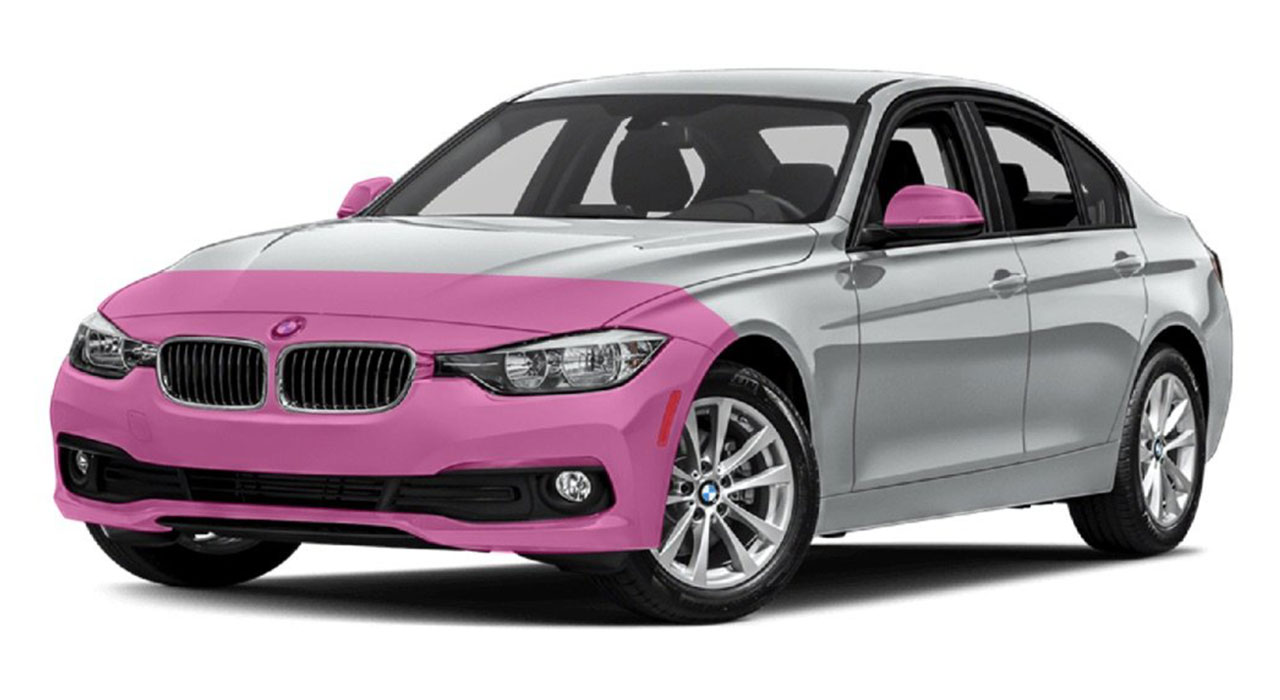
Kavaca paint protection film gives you the flexibility to opt for a clear bra installation as shown, a full front, or complete vehicle installation.
What’s the Verdict – Is Paint Protection Film a Good Idea?
This really breaks down to how you answer those questions above. There is no debating the fact that PPF works better than any product on protecting the car’s paint from damage. The best PPF’s like Ceramic Pro Kavaca not only instantly heal, but they also can cover light scratches, like swirl marks. Now in 2021, we also offer KAVACA Ceramic Coated PPF, which combines our world-renown 9H ceramic coating infused into our PPF. Have the convenience of Ceramic Pro 9H with the high impact protection of paint protection film in one easy package.
This is a huge breakthrough in paint protection film technology, as it can reduce the need for time and cost-inclusive paint correction prior to application. Obviously, you’ll want to have your vehicle inspected by a professional auto salon prior to hitting the “go” button to determine if your paint is in good enough shape.
If you’re thinking about upgrading your paint protection game to the highest level, click the button below to request a free estimate for Kavaca paint protection film from one of our PPF installer experts.

